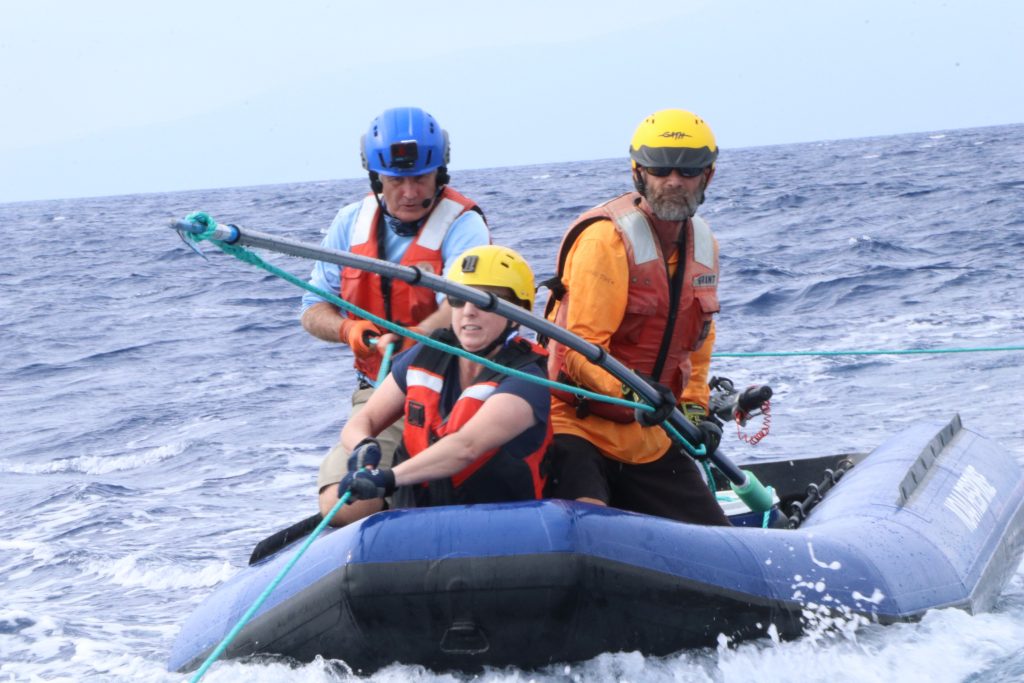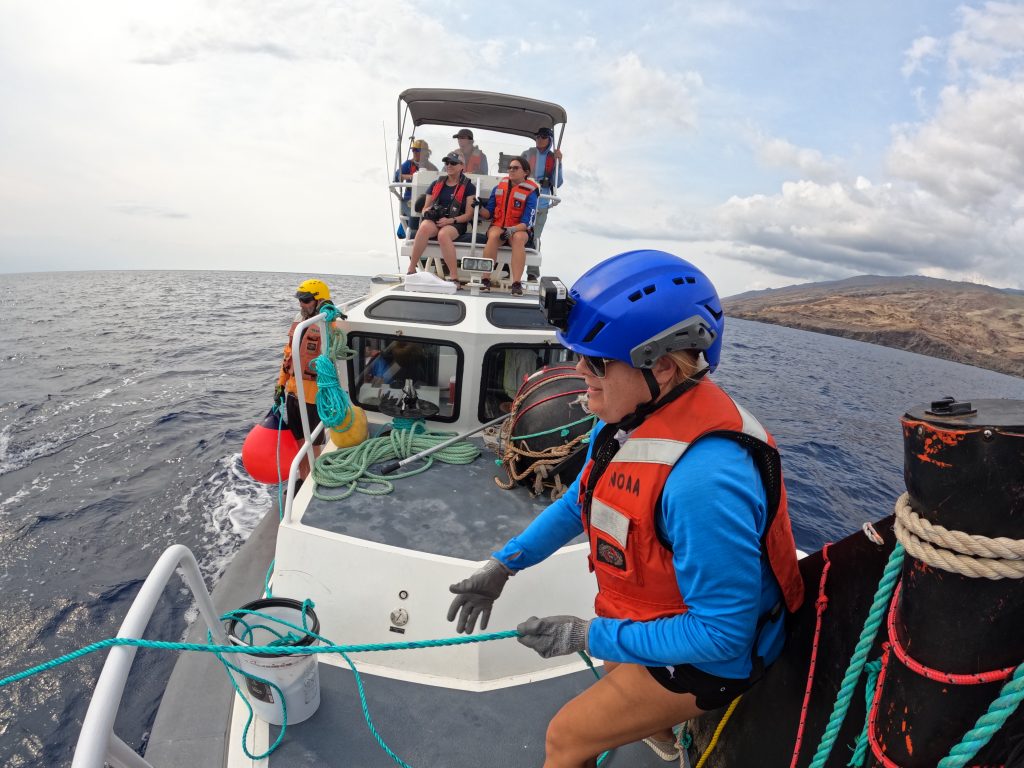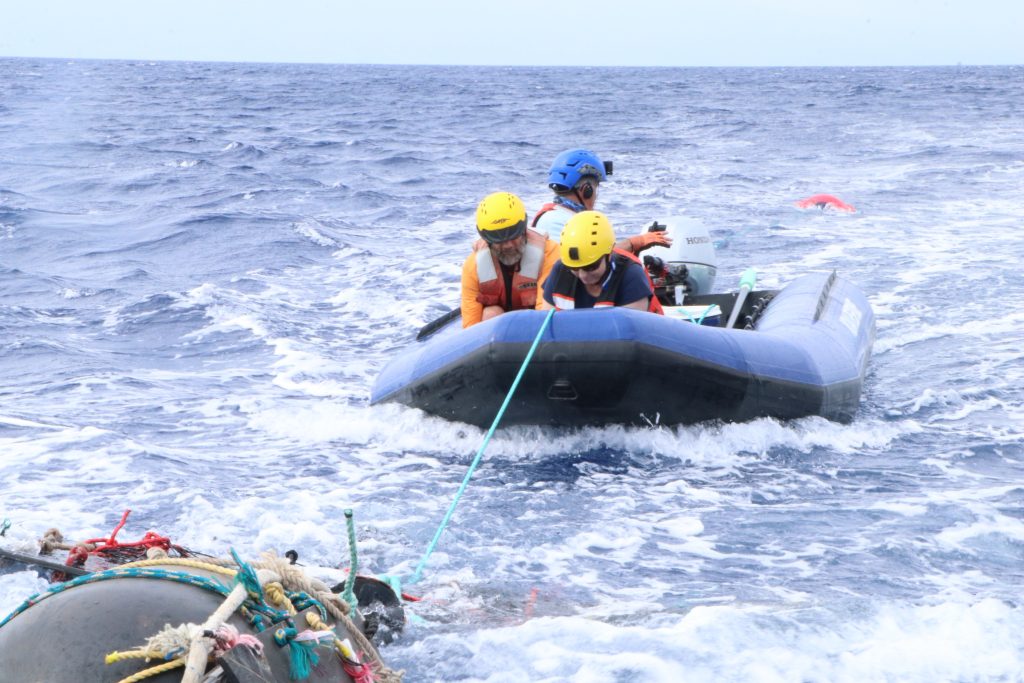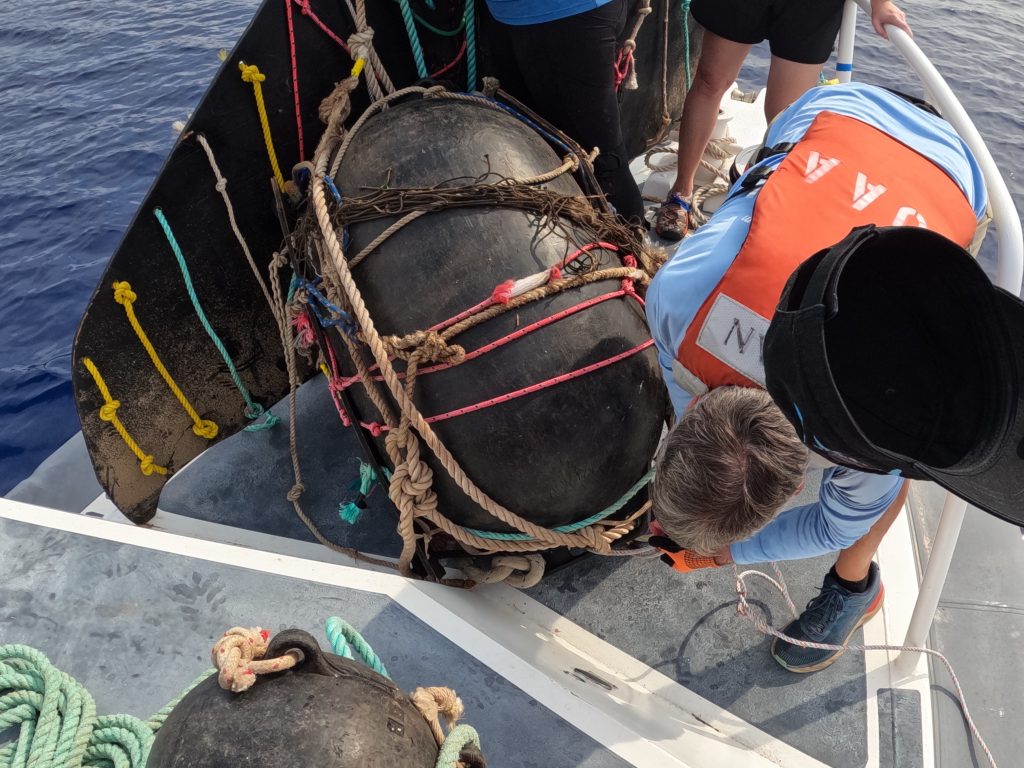Disentanglement teams train to rescue humpback whales in Hawaiʻi
In waters within or near the Hawaiian Islands Humpback Whale National Marine Sanctuary, humpback whales are spotted a dozen or more times each season with fishing gear or marine debris wrapped around them.
In the worst cases, the entanglement can kill the animal.
When a report of a tangled whale comes in, a specialized, highly-trained group led by federal and state workers head out on a search and rescue mission. Freeing an entangled whale can take hours or even days.
Chad Yoshinaga, Safety Program Manager at NOAA’s Pacific Islands Science Center, said: “My analogy is we’re looking for a single needle in a stack of needles in a gigantic haystack.”
The quicker they receive reports about distressed whales from mariners or people on the shoreline, the faster they can intercept it and begin the “rescue” part of their mission.
In December, experienced and novice whale disentanglement specialists took to the sea for several days of training and refreshing of their skills.
During whale season in Hawaiʻi, Ed Lyman is the sanctuary’s Regional Large Whale Entanglement Response Coordinator under NOAA’s Marine Mammal Health and Stranding Response Program. He is leading this season’s training; the first since before the pandemic.
“We’re working around enormous, moving animals, at times in heavy seas and always from moving boats,” Lyman said. “The safety of our disentanglement teams is paramount. We obviously want to free the whales, but we have to do it without getting anyone hurt.”
Training begins with a thorough on-board briefing, which includes a check on the experience level of each team member, their comfort level in performing various tasks, and how they’re feeling in general.
Responses often involve two vessels. The support boat carries an inflatable boat that is aired-up in route and launched when a tangled whale is spotted.
“It’s risky business trying to free a 40-ton whale, so you want to deal with the what-ifs,” Lyman said. “So, one boat is going to approach and work on the whale, while the other one is there to protect all the people involved.”
For training, the bow of the support boat carries a wooden whale tail, draped with various sizes of fishing line. It becomes the stand-in for a live animal to give everyone an opportunity to practice or learn how to throw grappling hooks and cut lines while bouncing around in the waves; all while managing a large knife at the end of a 14-foot or longer pole. It’s not easy work and requires years of practice and experience.
Whale disentanglement crew members earn designations that are part of an Incident Command System from one to five, from least experienced to most experienced. Lyman said the ideal number of people to have involved in a disentanglement is eight.
“You need two or three people on the inflatable approach boat and you need a good five on the support boat to address all the roles,” he said. “A helms person, a crew member, someone doing documentation, a gear person and a safety officer. That’s someone who is not doing anything but watching the big picture.”
On the approach boat, the team typically includes a bow person watching the animal and holding onto gear, a helm person and a safety person.
The Department of Land and Natural Resourcesʻ Division of Aquatic Resources is the state agency responsible for conserving and protecting all of Hawai‘i’s wildlife. Staff often partner with NOAA on whale rescues. For the latest training staff from Kaua‘i, O‘ahu, Maui and the Big Island participated.
It takes years of experience to become a top-level disentanglement expert, but no matter their level of experience the people who free whales are dedicated and passionate about what they do. It’s hard work and when a whale is freed they all agree there’s no better feeling.











